Samsung Galaxy S 6 and S 6 Edge: Preview
by Joshua Ho on March 26, 2015 9:00 AM EST- Posted in
- Smartphones
- Samsung
- Mobile
- Galaxy S6
- Galaxy S6 Edge
GPU Performance
As previously discussed, on the GPU Samsung has added two additional shader cores to the Mali T760 for additional performance in addition to a clock speed bump from 700 to 772 MHz maximum. To evaluate the effects of this we look at GFXBench which is generally accepted as a pure GPU benchmark.

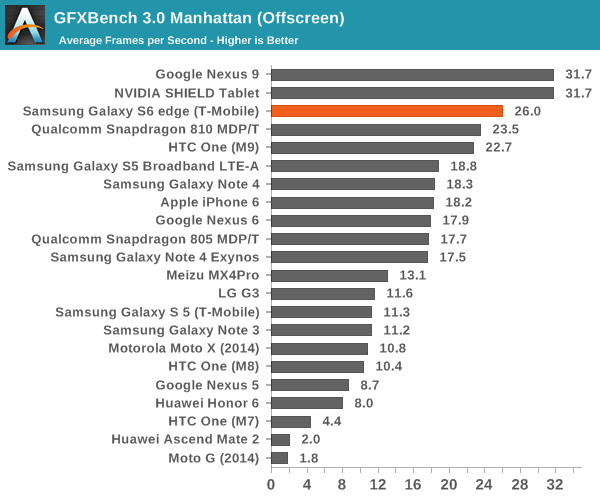
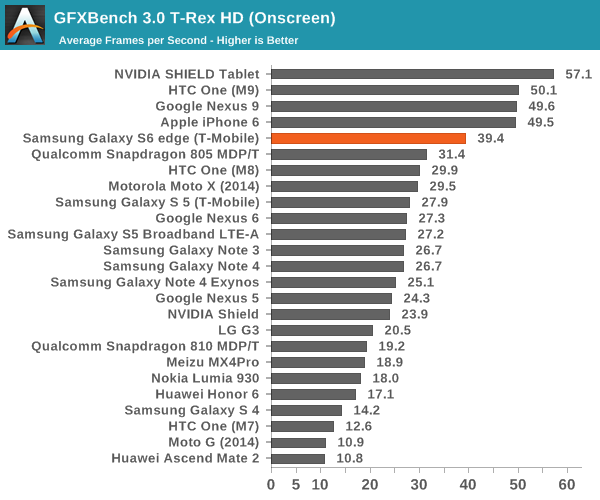
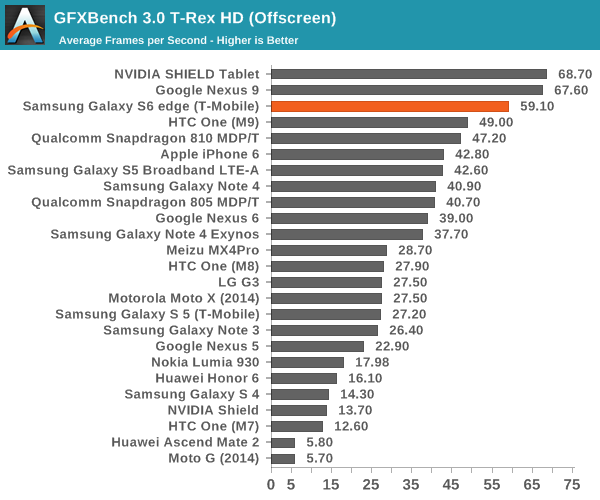
From the results the Mali T760MP8 GPU of the Exynos 7420 performs admirably in comparison to the Adreno 430 of the Snapdragon 810. We see a 10% lead over the Adreno 430 in Manhattan, growing to 20% in T-Rex. Qualcomm hinted that the Adreno 430 is more strongly improved in ALU performance over the Adreno 420, which would explain why the gap isn't as significant this generation. A 700 MHz clock on the Adreno 430 would likely equal to T760 in this case, but I suspect the power consumption of such a clock would be untenable. The Galaxy S6 does fall behind on the on-screen benchmarks due to the 1440p display compared to the 1080p display of the One M9, but rendering at a lower resolution would avoid most of these problems in real games.
Display
As previously discussed, the Galaxy S6 line introduces a newer generation of AMOLED displays, which is said to increase maximum luminance to 600 nits. Samsung claims that this was achieved with the use of new materials, which is likely necessary in order to sustain power efficiency improvements. It doesn't seem that AMOLED is uniquely suited to high resolution, but rather that Samsung Display Corp. is managing to dramatically improve how they make AMOLED displays with every year that offset power consumption increases from higher resolution displays. To find out how Samsung did, we use SpectraCal's CalMAN 5 Ultimate, in addition to X-Rite's i1Pro2 Basic to characterize displays as accurately as possible.
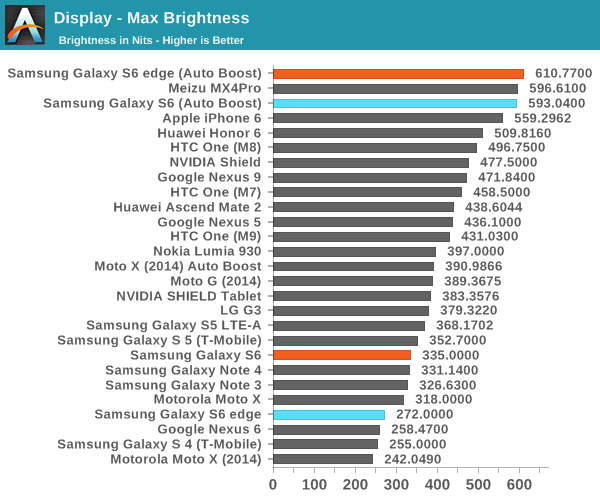
From the results Samsung's claims of a 600 nit display are valid in this case, which is a 100% APL white display. It's important to note that achieving this requires the use of auto-brightness, and that manual brightness is limited to a much lower brightness to reduce power usage, here the S6 sees similar maximum brightness as the S5. The S6 edge disappointingly only achieves 272 nits in this mode, a rather low value. I saw color balance shift dramatically in auto-boost mode, which suggests that this operating mode is likely less efficient than manual brightness. As an explanation, we've seen that colors are controlled in AMOLED by voltage while brightness is controlled by PWM (pulse width modulation). As with most recent AMOLED displays, there's no DC bias to the pixels so the contrast really is infinite instead of just a very large number when displaying black.
Galaxy S6
Galaxy S6 edge
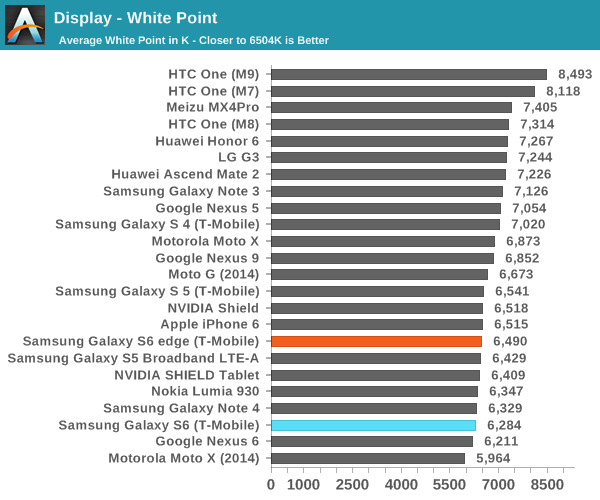
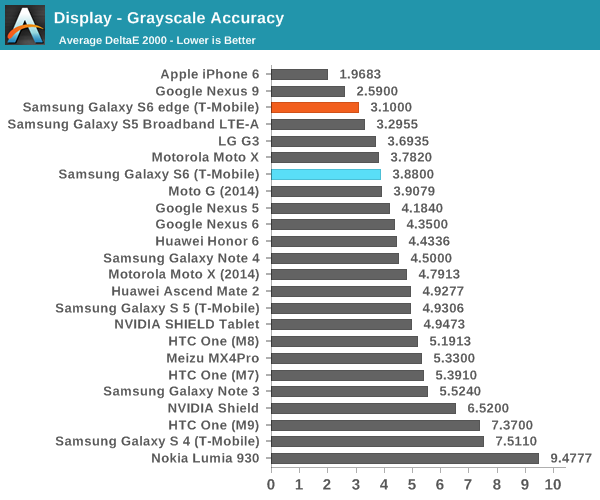
Moving on to grayscale, we can see that Samsung has done a pretty good job of controlling the white point and gamma across the saturation sweep, even if green is slightly dominant in both displays. We can also see that there is variation across displays as the S6 edge is closer to neutral while the S6 sample tends a bit warmer.
Galaxy S6
Galaxy S6 Edge
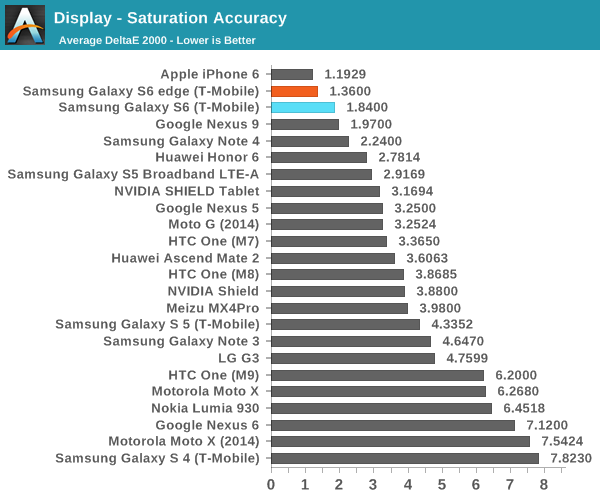
In the saturation sweep, both displays do an incredible job. I really don't have anything else to say here, because there's really no way to improve on the level of calibration Samsung has done on this display. Unless Samsung calibrates every single display in production, which is wildly impractical and effectively impossible to do, this is as good as it gets for a mass-produced device. Improving past this point will also be incredibly difficult to perceive, which means there's no real reason to go any further.
Galaxy S6
Galaxy S6 edge
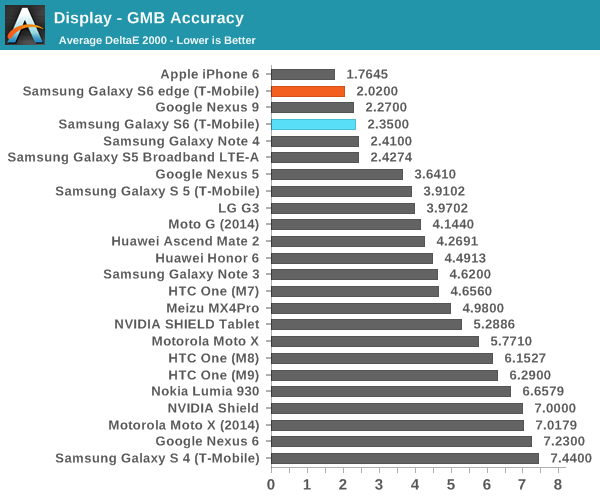
In the Gretag MacBeth ColorChecker, we can get an idea for overall color accuracy, which paints a picture similar to the saturation test. The only real problem I've noticed with these displays are the viewing angles, which can produce color shifting when the display is tilted. This is a bit of an issue on the edge variant as I can see that the edges of the display appear somewhat green when viewed head on, but otherwise there are no real issues to be seen here. Overall, this is probably the best display anyone will be able to get in a smartphone right now. This level of progress is amazing from Samsung, given just how bad things were with the Galaxy S' AMOLED display, even as recent as the display of the Galaxy S4. With the Galaxy S5 review, I said that I wouldn't be surprised to see AMOLED equal, if not exceed LCD within a year or two, and Samsung has managed to finally hit that mark.



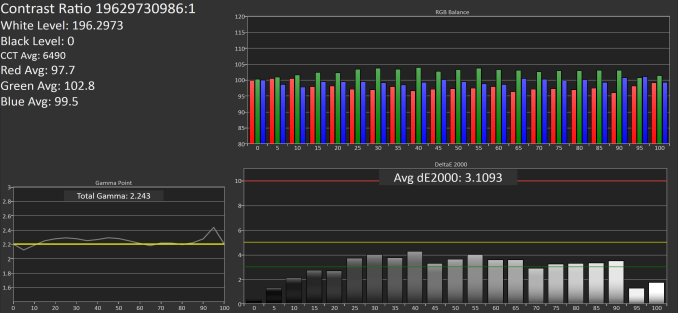
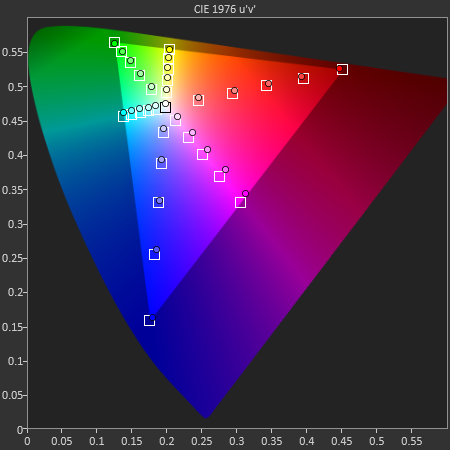
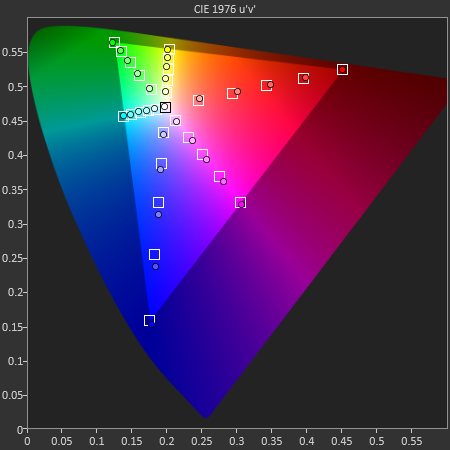
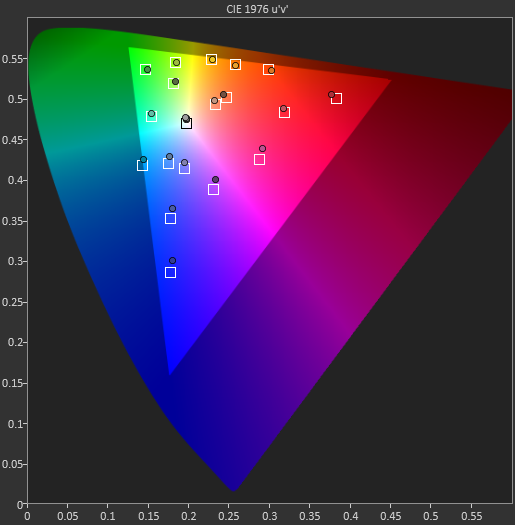









200 Comments
View All Comments
Novacius - Thursday, March 26, 2015 - link
At the moment Qualcomm seems to have much bigger problems with S805 and S810. The S810 is throttling so much that it's GPU is just 15% faster than S801 (!) when running for a long time period.Guest8 - Thursday, March 26, 2015 - link
No Samsung 14nm is more like 20nm with fins. Same with TSM 16nm.Novacius - Thursday, March 26, 2015 - link
It's not that easy. They didn't just added FinFets and called it 14/16nm, there are other improvements, too. The density is higher for example, which wouldn't be the case if they only added fins. In my honest opinion, Samsung's 14nm process isn't too far away from Intel's.Guest8 - Monday, March 30, 2015 - link
Actually it is. It's denser because it is meant for a lower TDP. You will never see a 4 ghz version of this AP. If you do some searching you will see the characteristics for Samsung 14nm is very similar to 22nm Intel. Samsung only beat Intel to market in terms of naming convention ;-)theduckofdeath - Thursday, March 26, 2015 - link
It has the power efficiency advantages of 14nm, just not the density.FlyBri - Thursday, March 26, 2015 - link
Yea, the removal of a user replaceable battery has definitely been disappointing, but I'm going to wager a guess and say that Samsung will keep that feature in it's Note line and push users to a Note if they want/need a user replaceable battery.hrrmph - Friday, March 27, 2015 - link
That's fine for the phablet market, but this S6 marks Samsung exiting the true high-end market and bringing themselves down to the upper-middle of the market, which is where the iPhone has lived its entire life. I guess Samsung is giving up on the premium high-end phone market just like they gave up on the premium high-end mini-phone market.A lot of people still want premium high-end 5" phones and 4.5" mini-phones. So who will make flagships in those size ranges with removable batteries, Micro-SD slots, and Dual-SIMs?
The S5 DUOS may have been the last of its breed. If the manufacturers keep going cheap like they have lately and removing important features, then there may not be a premium high-end manufacturer to serve that market.
Morawka - Thursday, March 26, 2015 - link
no they wont be screwed, they'll just have to take it into a service center and pay $99 and get it replaced. Just like any other sealed phone.Morawka - Thursday, March 26, 2015 - link
regarding battery life.. yeah they added more screen and ram but you guys seem to be forgetting this uses 14nm.. leaps and bounds ahead of last years model when it comes to power consumption efficiency.ASEdouardD - Thursday, March 26, 2015 - link
GPU performance would be class leading if Samsung didn't insist on 1440p displays, which are performance eaters. That's why the iPhone 6 and the M9 beat it in GPU tests. And CPU benchmaks are pretty much always dominated by Apple (for the last few generations anyway). For an Android phone, the cpu results are great too.